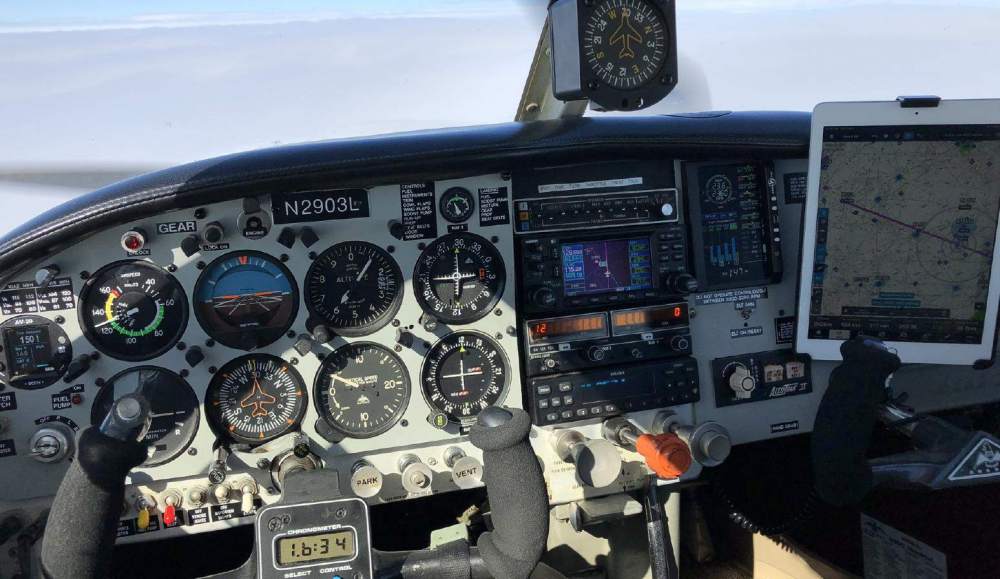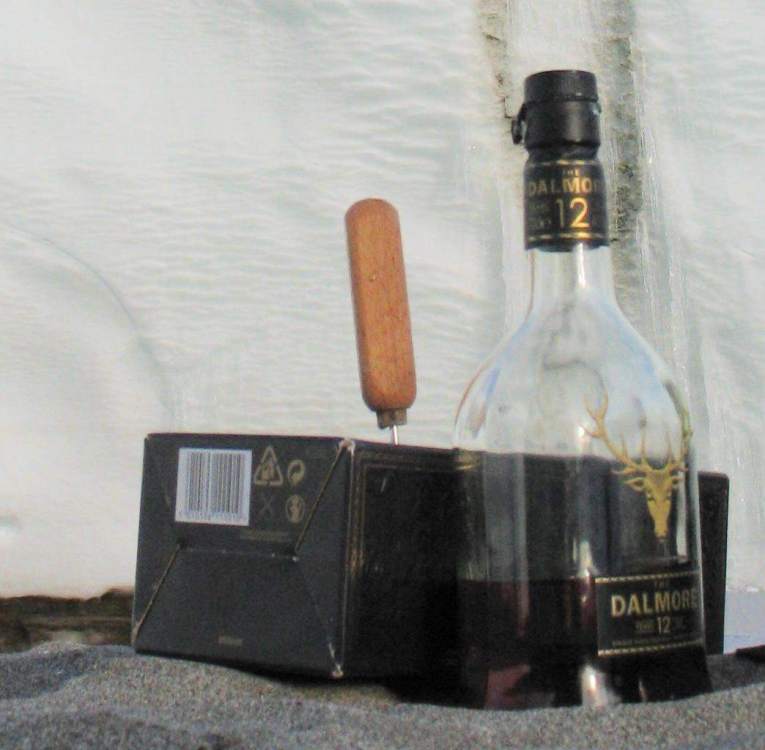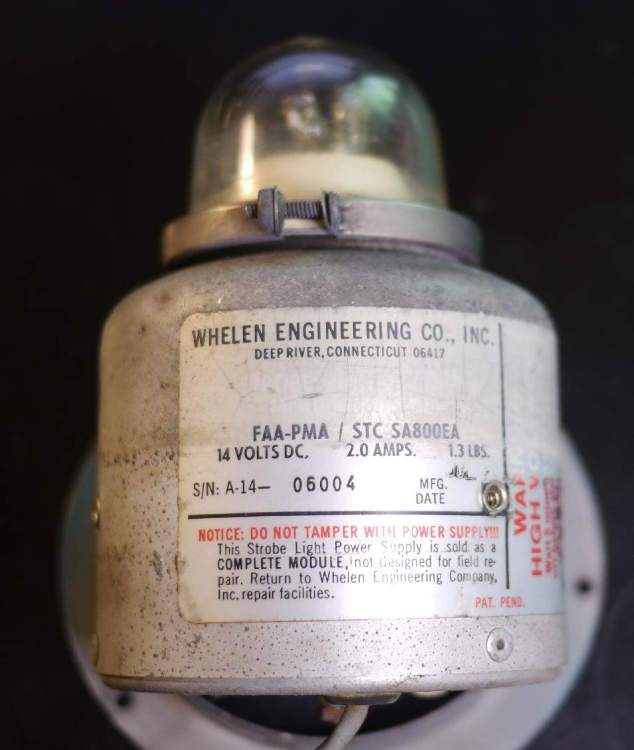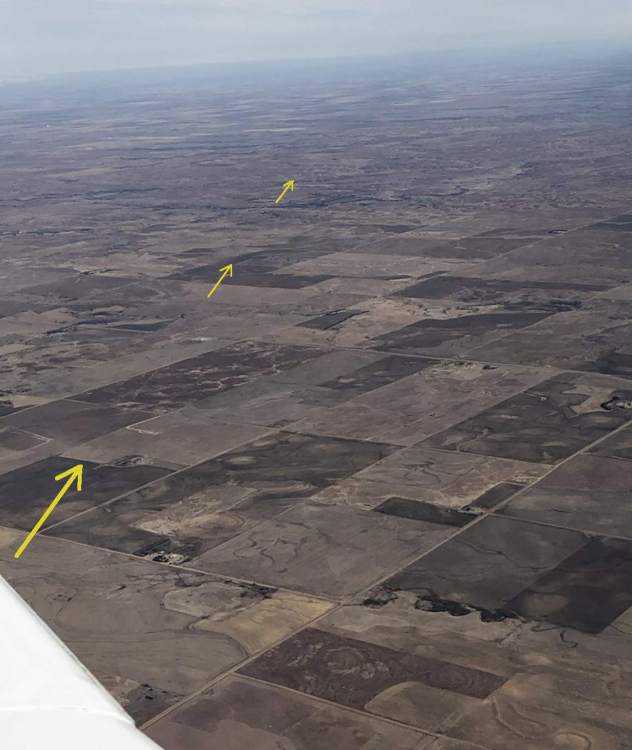-
Posts
3,250 -
Joined
-
Last visited
-
Days Won
8
Content Type
Profiles
Forums
Blogs
Gallery
Downloads
Events
Store
Everything posted by 0TreeLemur
-

SF50 Burned while parked in CA
0TreeLemur replied to Seth's topic in Mooney Safety & Accident Discussion
Don't worry, I can fix this. My dad's a TV repairman. He's got an awesome set of tools. -Spicoli, Fast Times at Ridgemont High -

edm-900 on the right side?
0TreeLemur replied to ragedracer1977's topic in Avionics/Panel Discussion
I really like having it on the right side. It is not in my primary scan so I don't waste time looking at it too often. It is still easy to read on the right hand side of the radio stack though, and I look at it just the perfect amount. After we put it in, the CFII who gave me Mooney transition training and later my IR said "don't fixate on it". Good advice. It is a heck of a lot more legible & useful than the Garwin cluster it replaced that used to be installed where the Accutrak II now is. -
For a couple of years I've been advocating a FAQ section because there is a wealth of information on this site. This wealth is obscured by the odd search engine that places primacy of information on how recently it was posted, not in optimally matching the search string content. Most folks don't know to use outside search engines to search MS. That should be the first article in a MS FAQ: Searching Mooneyspace What I observe is n00bs join MS, get excited about all things Mooney, ask questions that are frequently answered by other n00bs, poorly. That is unless @carusoam gets to it first. The problem lies in the fact that most likely there is a thread that answers their question expertly. Thinking to the future, I still think having a place where threads that contain mostly complete re-hashes of commonly asked questions with a chain of good answers should be collated in a FAQ section. In the absence of a FAQ, would it be possible to nominate threads to that level? Would it be possible to change the thread name somehow to indicate that it is worthy of reading by nOObs? Maybe we could have a "spring clean" where good, informative, threads are nominated, and those deemed by old-timers (not me) to be worthy are put in a FAQ section of MS. Just an idea. I'd be happy to help. I'm sure others would too. After 2-1/2 years of actively monitoring this site, it is tough to see the same questions being asked repeatedly and the quality of the answer depends on who is answering. What folks get now ranges from good, to bad, to potentially dangerous, and occasionally excellent. Well, we have some threads with excellent answers on this site. They have become needles in the MS haystack. I think it is time for a FAQ section. Another benefit: it will free up more time for us to resolve important issues like ROP/LOP operations, cloth vs. leather, two-vs-three blades, the fate of the Mooney factory, and the effectiveness of @Marauder's loading strategy on CG during boarding.
- 37 replies
-
- 6
-

-
- learn from past experience
- better answers
- (and 7 more)
-

Wing Leveler, Turn and Bank coordinator
0TreeLemur replied to Luxuryairtravel's topic in Vintage Mooneys (pre-J models)
The Brittain T&B is both electric and vacuum driven. They can be had on online auction sites in working condition for several hundred dollars. What you need depends on the year of your a/c. You should spend some time searching these pages. There are many, many folks who in the past asked the same question you asked, including me. Learn from their stories. Cutting and installing a new panel is relatively inexpensive if you have some skills. A primary engine monitor is not prohibitively expensive to install if you can find a certified mechanic who will let you do some of the work. -

Gear cleaning and painting
0TreeLemur replied to Luxuryairtravel's topic in Vintage Mooneys (pre-J models)
The MSC that did my annual in January of this year did that when they replaced the shock disks. They bead blasted and painted the gear. They do not recommend powder coating. Powder coat is brittle compared to paint, which has more flexibility. Impacts by granular materials can cause powder coating to chip off more easily than properly applied paint. -

Headphone plug replacement question
0TreeLemur replied to 0TreeLemur's topic in Avionics/Panel Discussion
My intercom is mono. I'd love to have stereo and a new PS engineering stereo audio panel with virtual surround, but that ain't gonna happen for quite a while. -

Headphone plug replacement question
0TreeLemur replied to 0TreeLemur's topic in Avionics/Panel Discussion
Thanks. Old 10.20 headset is definitely mono. -

Headphone plug replacement question
0TreeLemur replied to 0TreeLemur's topic in Avionics/Panel Discussion
In my humid climate, that is a temporary solution. Chrome plugs are the way to go. -
I have an old David Clamp headset with brass plugs that keep corroding and become intermittent. I ordered and received new replacement chrome plugs from Spruce. But, the new ones are stereo. With regard to the photo, when using a stereo plug to replace a monaural plug, do I connect to contact 1, 2 or both? Thanks. Free toaster to whomever answers correctly first.
-
No worries- here's an example why: Last month (Jan.) we had the annual done on our '67C. While replacing the shock disks we were informed by the MSC doing the work that the nose gear shock tube was worn out. With the factory closed and LASAR out of stock, I sought a used part on MooneySpace by contacting a few folks on here who trade in used parts. A serviceable part was in my mechanic's shop in less than one week, at less than half the price of a factory new part, which was unavailable. I'm not worried about the factory closing.
-
Does anyone have a copy of this article that they can scan and send me? I'm having a raging battle with a self-appointed editorial troll on the M20 Wikipedia page about this issue. Really pissing me off. I'd love to have a scanned copy of this article so I can cite it. Thanks.
-
If you can drive up to a glacier I think that would count. Canada? There are no "style points" in glacier ice getting that I know of. In my case it was a US Air Force C-17 to McMurdo from Christchurch, NZ, then via Eurocopter to McMurdo Dry Valleys. That photo was taken on the last Sunday of the field season during a little down time spent on the "beach" at the foot of Canada Glacier on the shore of scenic (and frozen) Lake Hoare. The return involved commercial flights from Christchurch-Sidney-Honolulu-Los Angeles-Dallas-Denver. Two red-eyes. Good times. I met a wonderful elderly British couple once that went to Antarctic Peninsula from Argentina on a Russian cruise ship. They gleefully told me about having to be tied into their bunks before going to sleep to prevent being flung around their quarters by the seas at 60-degrees south. I'll take the C-17 any day.
-
Here is a photo of the one we took out of our '67C. It was grounded to the airframe, with the shielded +14V power line, and never produced noise. If yours is the same model and similarly configured, then it probably needs servicing or replacing. Running a ground wire all the way to the battery sounds like a lot of work, particularly if your battery is in front of the firewall like mine. I suspect that your problem will remain after you do that, based on my experience. I could be wrong and often am though.... Good luck.
-
I never experienced noise due to the belly beacon before we eliminated it and installed Whelen Orion 650's on the wingtips. It was the stock Whelen strobe that used a ground to the airframe and a shielded power line. Is your power wire shielded? That might solve your problem. I never liked the way the belly beacon flash illuminated the tops of the wings, so we eliminated that issue.
-
Amen. Any time below MSA and in clouds without SA is borrowed time...
-

First fixed wing, experienced helo guy, need some ideas.
0TreeLemur replied to JD548's topic in General Mooney Talk
With your flight experience and abilities you should be able to do transition training in a Mooney. Finding a compatible instructor who appreciates your existing skills, understands the differences, and is more than familiar with Mooney's will be a challenge. Where are you located? The person I bought my Mooney from is a CFII and he did my transition training. He is also helo rated- somebody like him would be perfect. I'm in Alabama. -

Focus should be on the big wx picture
0TreeLemur replied to Scott Dennstaedt, PhD's topic in Miscellaneous Aviation Talk
Great thread Scott! In my opinion, it would be possible to provide a more consistent and complete presentation of available data. The Foreflight briefing app provides an example that helps to guide the way, but I still augment it with other information. I wish NOAA would add more explicit representation of freezing level. It might be there in some kludgy javascript flight path tool on aviationweather.gov that nobody uses because the graphics are slow and look like an 80's computer game. They could also show GFS model output for the time of flight because it usually shows areas of convection. Advances made by the aviation industry in avionics have not been matched by the presentation of actionable info. This time of year, I want to know where the freezing level is along my route of flight, and am I going to be in clouds or precip. The flight I planned last Thursday from AL to CO was a planning nightmare because of a descending freezing lvl along my route of flight and multiple cloud layers. In the summer, I want to know the risk of thunderstorms, which they already do a decent job of showing using green/yellow/red blobs. That could be improved using short term model output which is available, but most pilots are not aware of it. Just my personal thoughts. While affiliated with NOAA, I do not work with NOAA's aviation division. -
Efficient climbing is done with nose down. Raising the nose causes helicopters to move backwards at low speeds, and is unsustainable at high speeds unless you have enough momentum to do a loop, because you are going to lose forward speed.
-
Because of the need for sufficient centrifugal force to hold them outward, rotors will fold up before getting to a high enough angle of attack at slow speed to stall like an airplane wing. Rotor speed is the most important variable in keeping a helicopter aloft.
-
I've used these guys with great satisfaction. I needed a couple that weren't in the kit and they included them for me no-charge. http://www.aerographics.com/
-
Yesterday morning heading back to Alabama from Colorado at 9000 ft, I spied a portion of the Cimarron cutoff of the Santa Fe Trail in southwestern Kansas that has not been obliterated by posterity or the railroad. When I was in line with it, it really jumped out at me as a really long two-rut wagon trail. Then I grabbed my phone and took this photo a bit after the fact. The Santa Fe Trail was active from about 1812-1880, linking Jefferson City, Missouri, to Santa Fe, Mexico, then New Mexico after 1848. Photo looking NE.
- 633 replies
-
- 14
-

-
We installed it. Worked fine on our '67 C, except for a bit of a gap along the aft-bottom portion of the door. We shimmed up the thin aluminum angle along the bottom of the door with a piece of gasket material to close that gap, and now that seal works great. A previous owner had installed a HD special. My co-pilot's shirtwaist kept getting sucked out under the door! The new seal and shim stopped that from happening.













